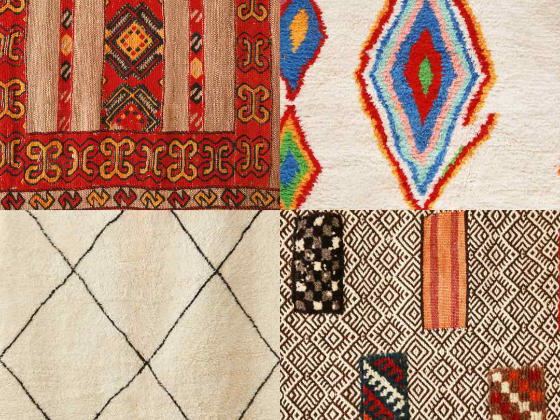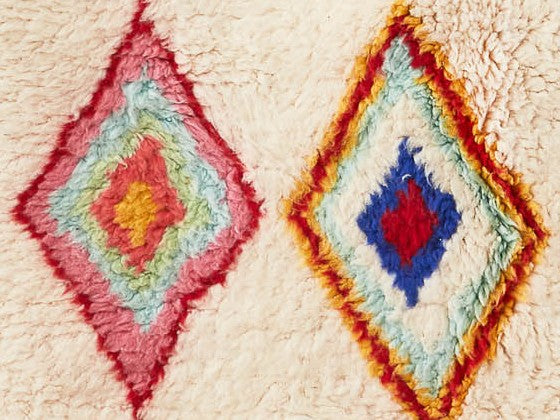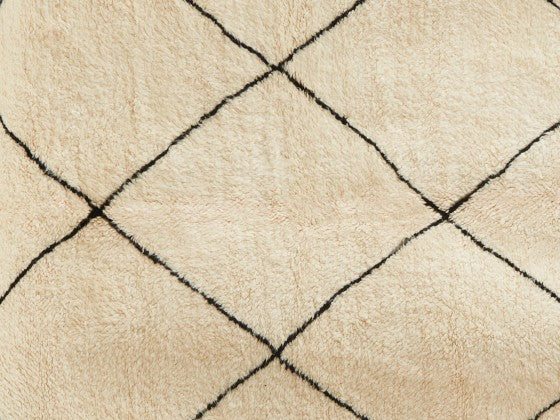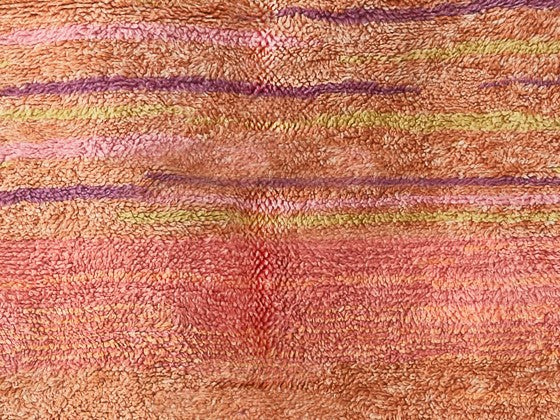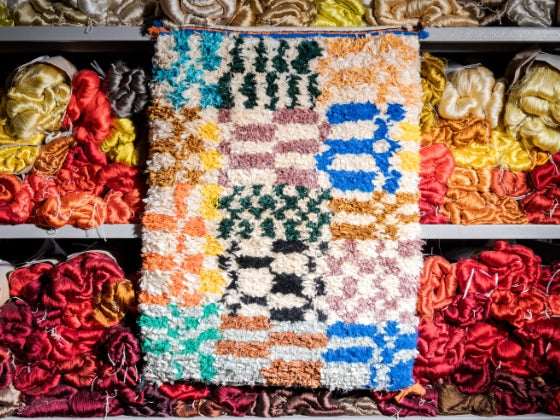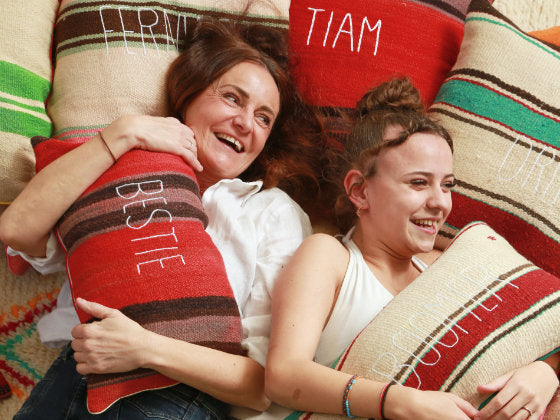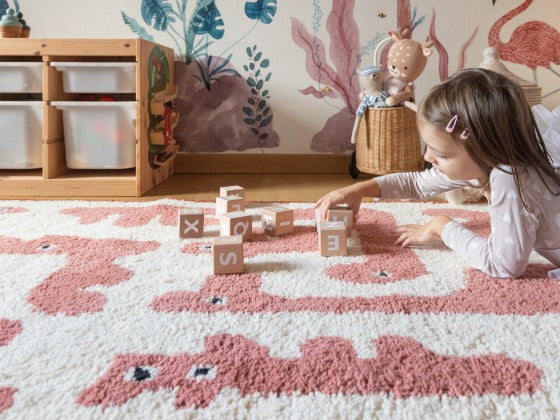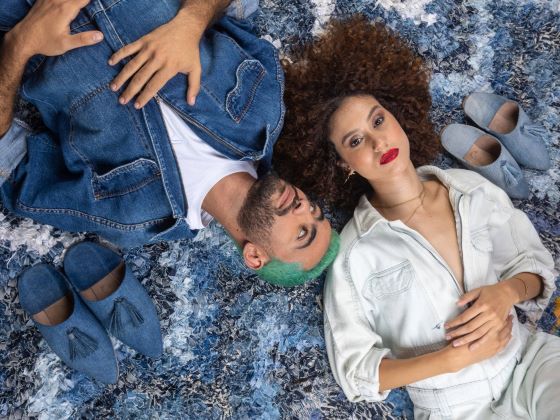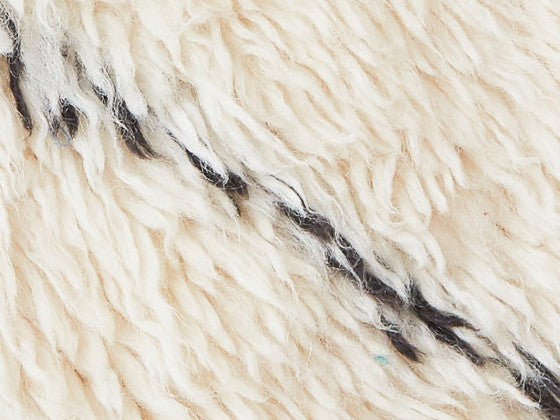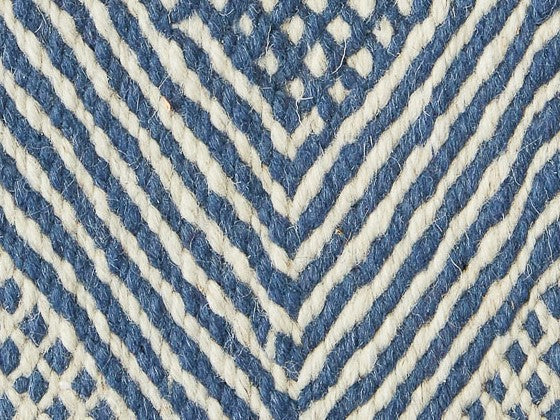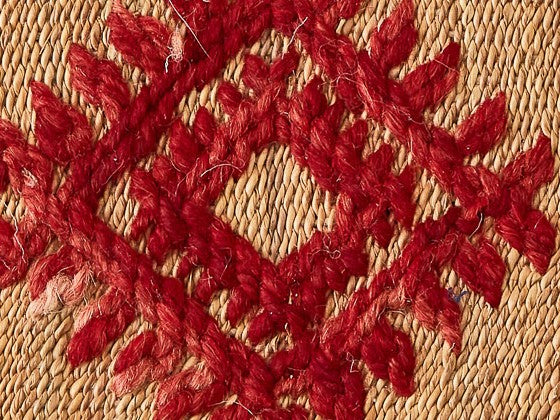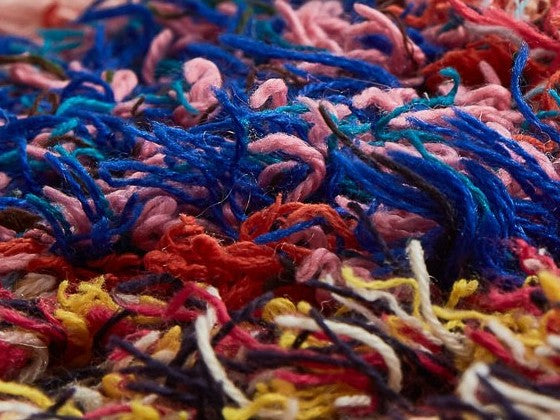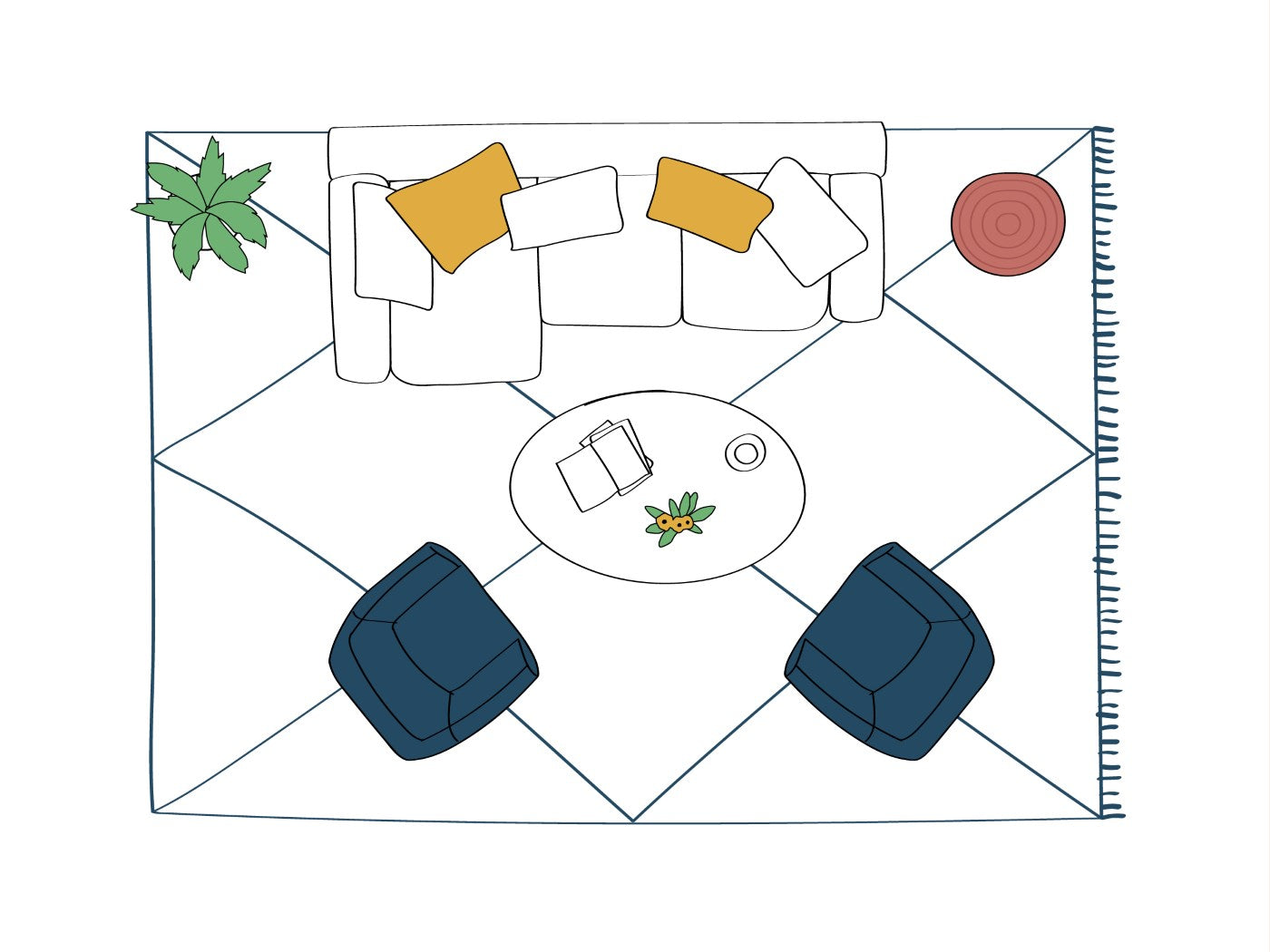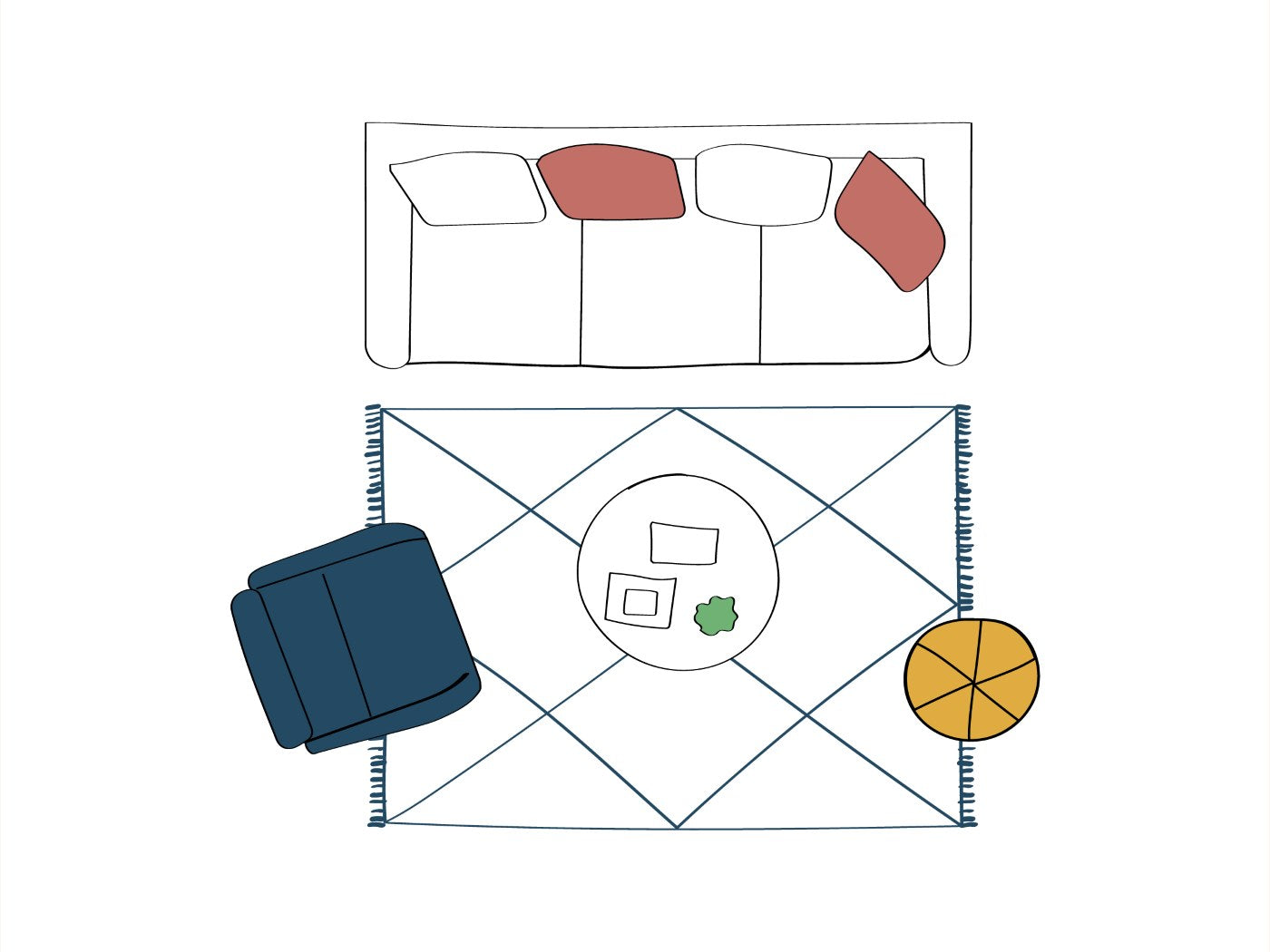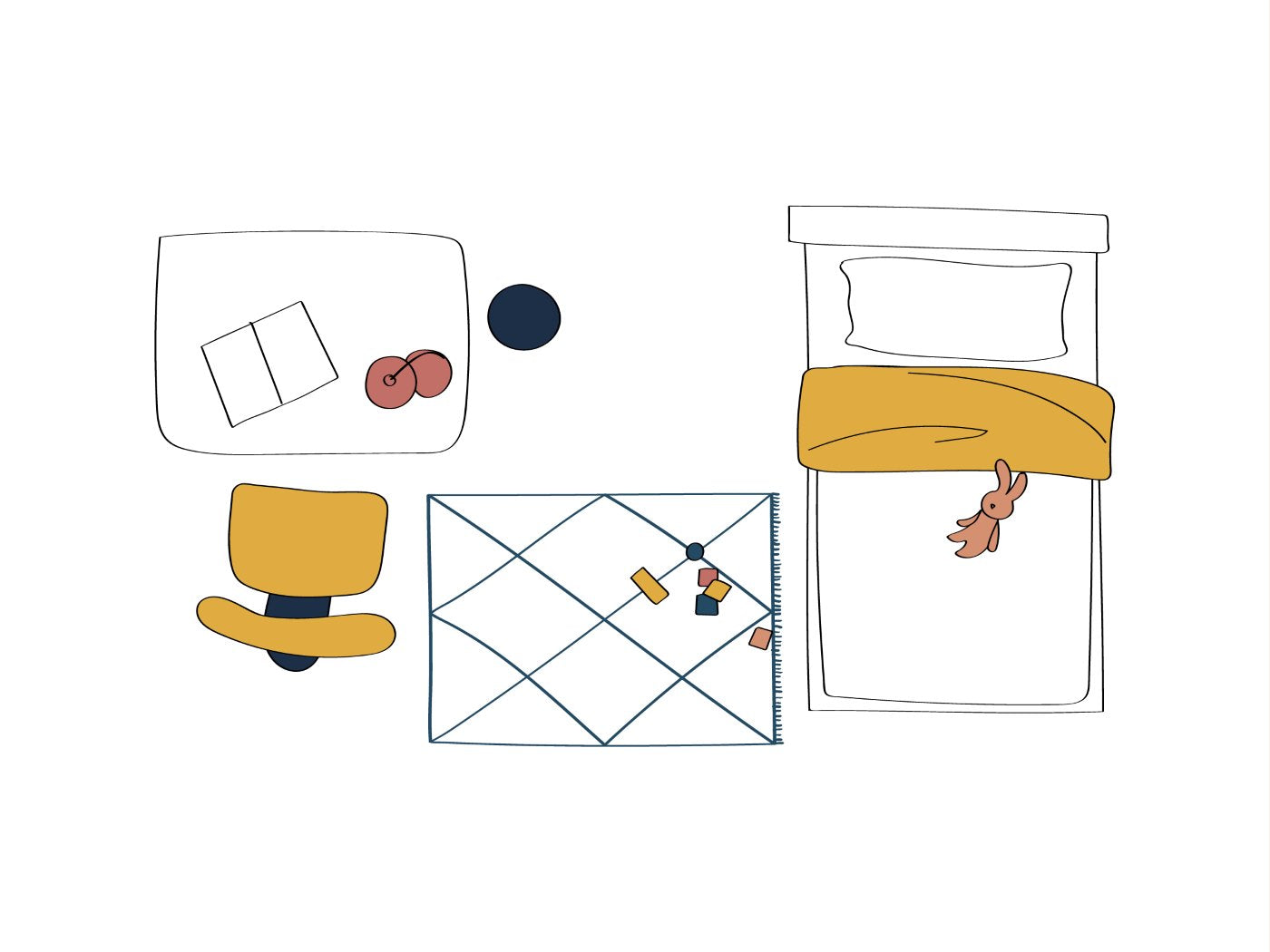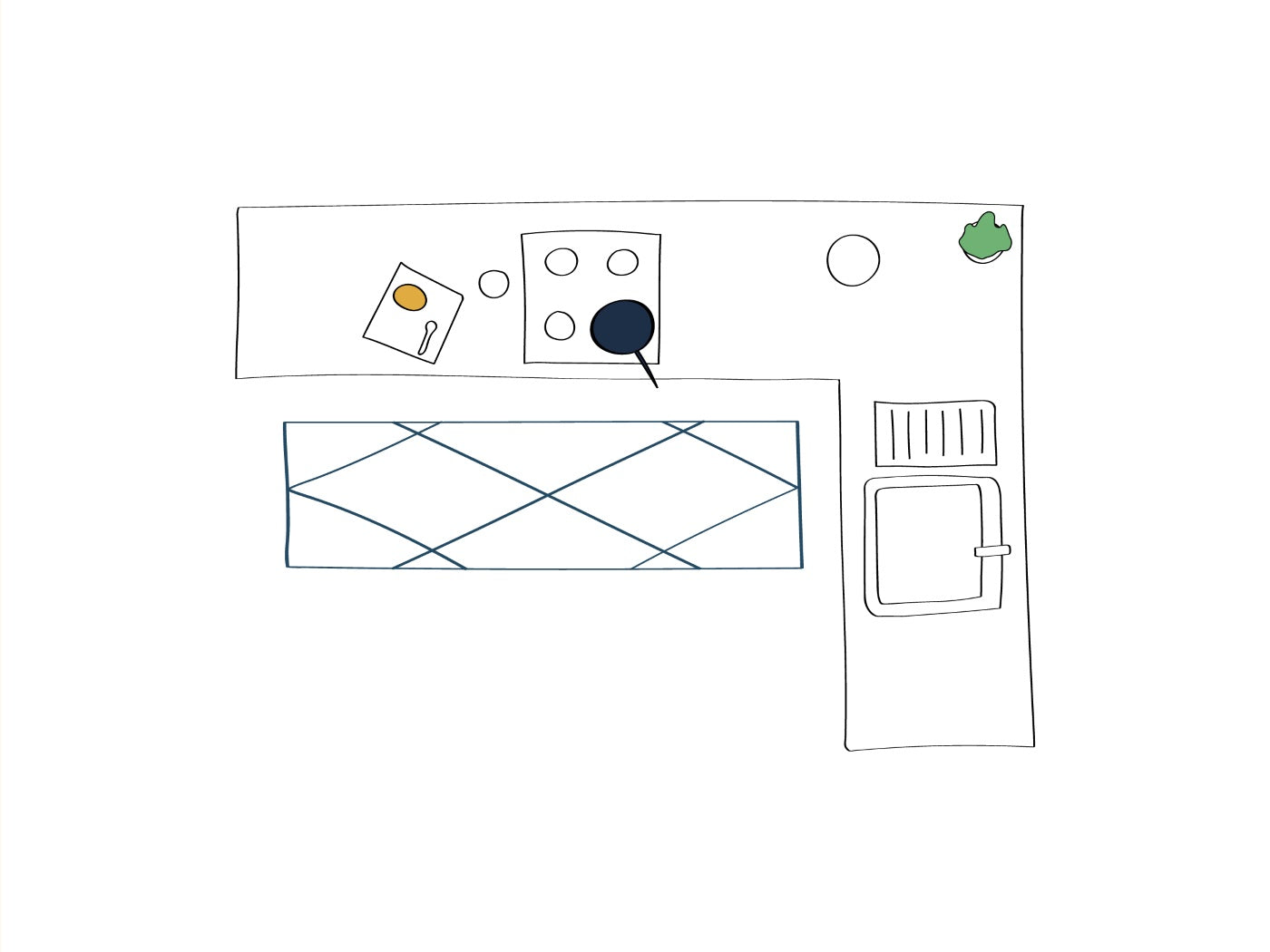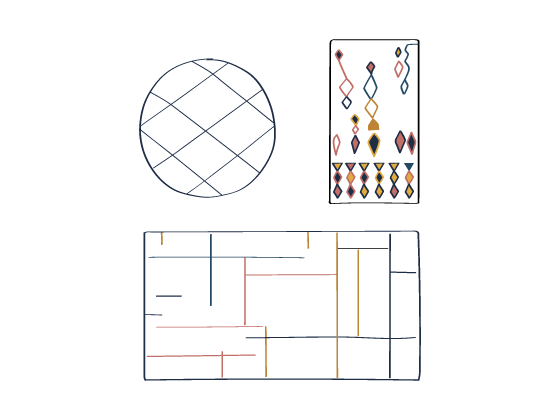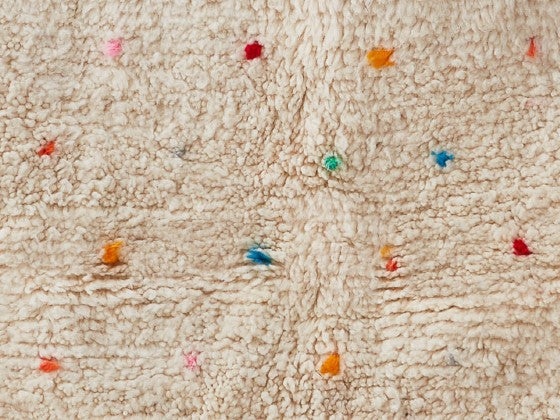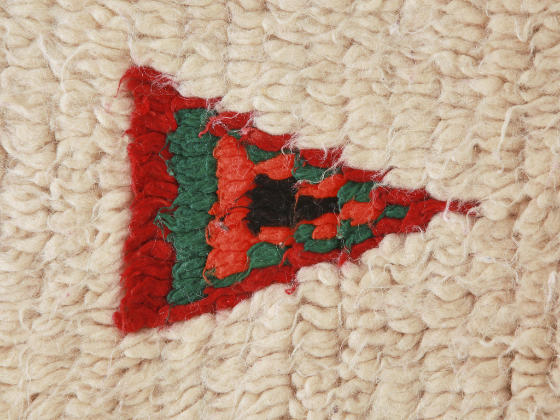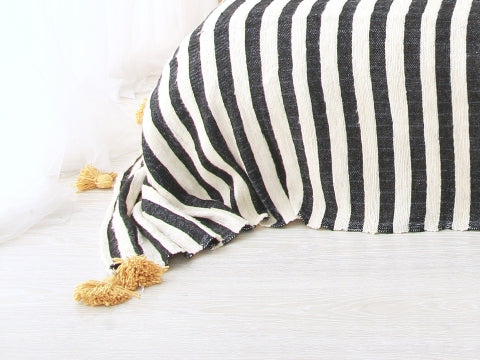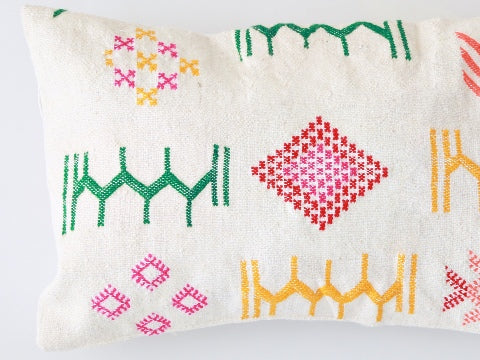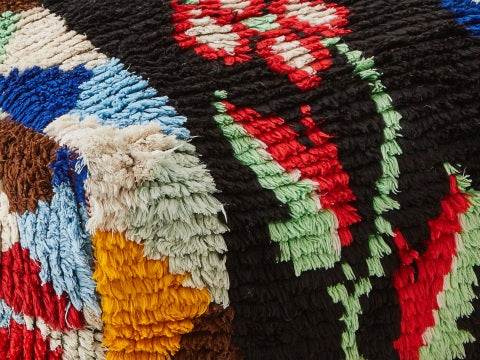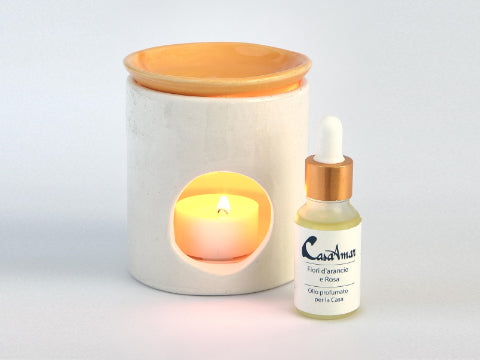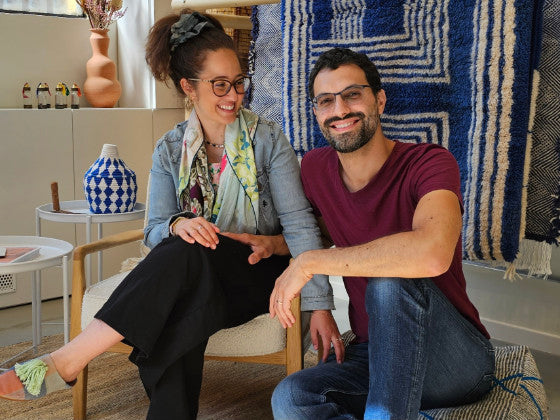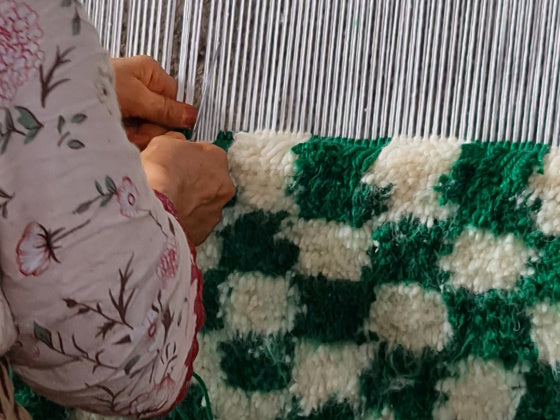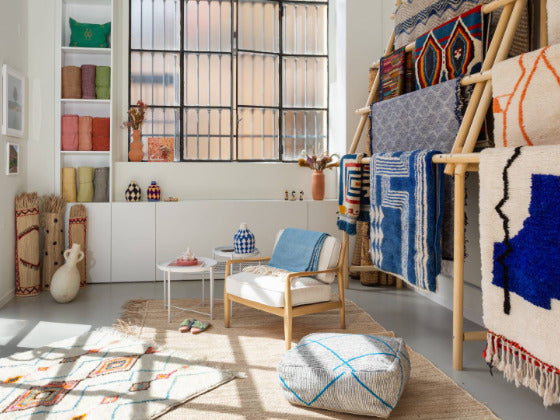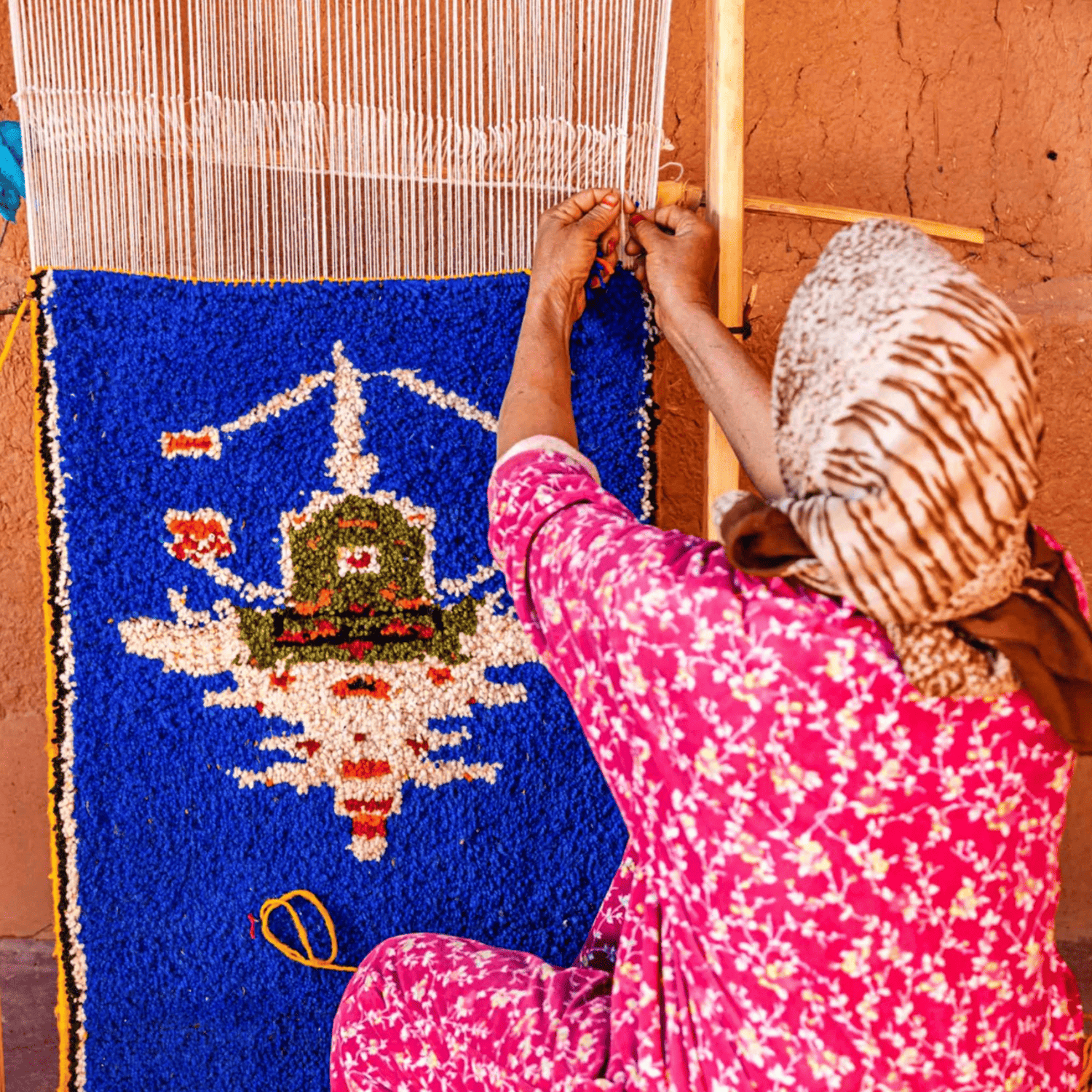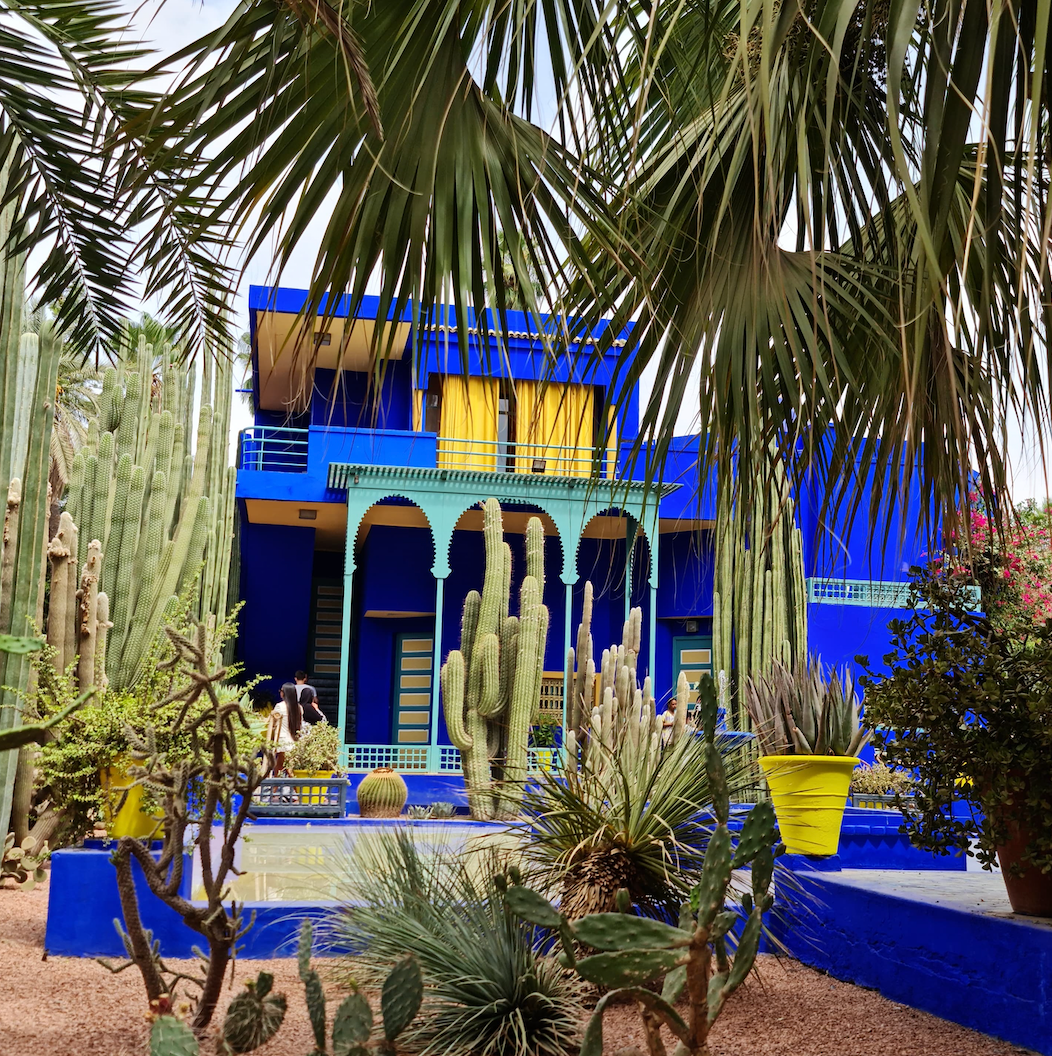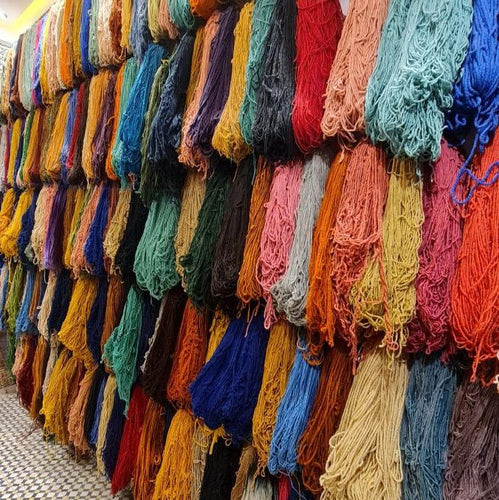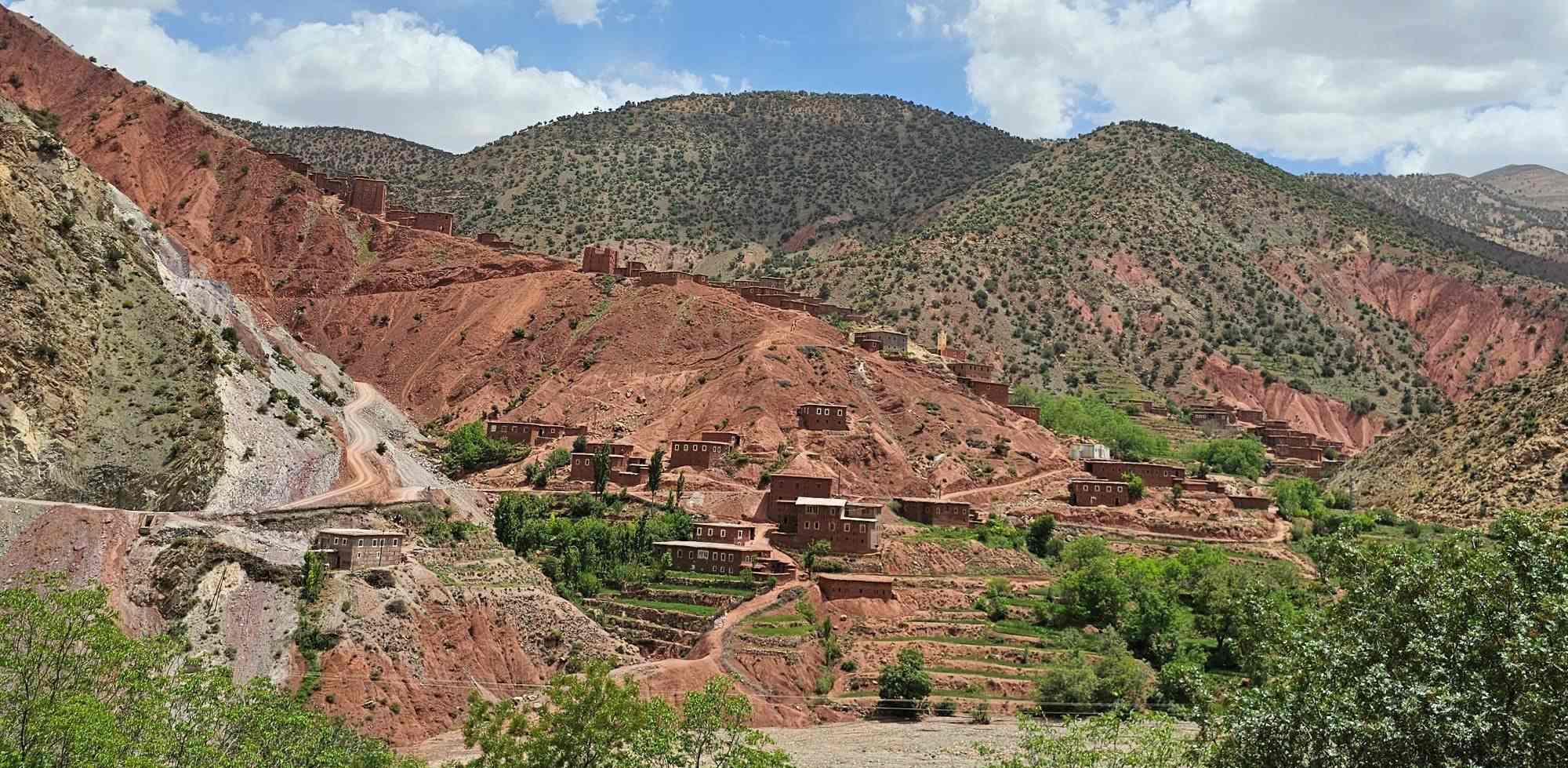What is a Berber rug? Here you'll find everything you need to know about origins, styles and authenticity of these Amazigh treasures.
Berber rugs from Morocco represent one of the most fascinating expressions of the local artisan tradition. These artifacts, steeped in history and culture, have become iconic symbols of "ethnic" design and contemporary furnishings. From their origins among the Amazigh tribes to their global diffusion as decorative elements, these handcrafted rugs combine art and beauty, bringing with them stories of ancient traditions, symbolic meanings and millenary mastery. In this long and in-depth article, we want to share with you exactly what a Berber rug really is .
We will talk about:
- What is a Berber rug?
- History and curiosities about Berber rugs
- Types of Berber Rugs
- How to choose a Berber rug?
- Where to buy Berber rugs
- Berber rugs as a furnishing element
- Small encyclopedia: who are the Berbers, culture, crafts, curiosities
But first, a necessary and heartfelt clarification.
| Berber is not a very correct term. We have explained it well here: why we say Amazigh and not Berber . We usually prefer to use the word Amazigh, even if it is less known in Italy, because it is the way in which the populations of North Africa - Morocco, Tunisia, Algeria - like to define themselves: in their language "Imazighen" means free people. This seems to us first of all a beautiful concept, and secondly we prefer it because it is a self-definition. The word Berber, on the other hand, is attributed: it is how "the others" have called these tribes for centuries, in fact it derives from the ancient Greek "bárbaros" and the Latin "barbarus", origin of the current term "barbarian" (with a negative meaning). Not all rugs made in Morocco are produced by Amazigh artisans, of course; this is why the most correct term would be - simply - Moroccan . But this time we will turn a blind eye and use this term because we are aware that it is widely used and we think it is right to delve into it to help you discover more about this ancient population. Hoping, however, that the profound underlying difference is clear. |
Happy reading!

What is a Berber rug?
Let's start from the basics, that is, from the origins of their history and the distinctive characteristics of these rugs, so appreciated today in the world of interior design.
Origins and meaning
Berber rugs are handcrafted artefacts made in the geographical area that today corresponds to Morocco (the north-western part of the Maghreb located in correspondence with the Atlas mountain range). They are furnishing elements but it is also important to perceive their profound cultural and historical value. Each rug holds a unique meaning, expressed through the rich motifs that decorate it: the symbols represent themes linked to daily life, nature and spirituality, transmitting messages of protection, fertility and prosperity. Sometimes, even stories and secrets of the artisan who makes them.
The Berber symbols
Amazigh symbols have specific meanings, often linked to concepts of protection, fertility and spirituality.
|
In 2024, the Center for Research in Amazigh Language and Culture ( CRLCA ) organized the conference “Les symboles berbères : un patrimoine entre perdition, transition et valorisation” (Berber symbols: a heritage between loss, transition and valorisation) on the theme of Amazigh symbols in contemporary society and how to preserve and valorise them. The event was attended by academics and researchers from various universities, including Béjaïa, Tizi Ouzou, M'sila, Batna, Biskra and Tamanrasset. Professor Guenfissi Hayette, a lecturer at the University of Béjaïa, highlighted how these symbols are a cultural heritage in danger and underlined the urgency of interventions to safeguard them, including television programs, the involvement of associations, and raising awareness among the new generations. She also proposed the creation of an inventory to valorise them also in the tourism and economic fields. The fundamental concept is that symbols, in addition to their decorative function, play a role in the identity and cultural distinction of Amazigh society. Participants stressed the importance of including this heritage in UNESCO programs. In Morocco, the Royal Institute of Amazigh Culture ( IRCAM ), founded in 2001 by order of King Mohammed VI, promotes the Amazigh language and culture. It has standardized the use of the Tifinagh alphabet for teaching, despite controversy with associations that preferred the Latin or Arabic alphabet. In 2011, Berber (ⵜⴰⵎⴰⵣⵉⵖⵜ, Tamaziɣt or Tamazight) became an official language alongside Arabic. |

Here are some examples of the symbols we find on rugs:
- DIAMOND ( or rhombus )
It represents femininity and fertility, and is often used as a protective talisman (the classic symbol of the most iconic Moroccan rugs, the Beni Ourain ). - EYE
It symbolizes protection and vigilance, keeping away the evil eye. - ZIGZAG
It indicates water, a vital element in Berber culture and can also represent the snake, a male symbol. - TRIANGLE
It symbolizes family and the cycle of life: birth, life and death. - CAMEL
It represents wealth and prosperity, the camel being a valuable asset. - SNAKE
Masculine symbol, it has a connection with prosperity, represents transformation, healing and fertility. - FISH BONE
It symbolizes fertility and abundance. - STAR
Indicates spiritual guidance and protection. - HAND OF FATIMA
Also known as Khamsa or Hamsa, it provides protection. - BARLEY
Fertility and prosperity. - BIRD
It represents freedom and the connection between heaven and earth.
These symbols do not only decorate the rugs, but tell stories and deep beliefs, reflecting the Berber worldview. The rug designs are therefore characterized by geometric and stylized motifs , which often incorporate the symbols mentioned above. And the meaning of the symbols varies depending on the region and the tribe that created them, making each rug a unique piece full of history. Rugs, as you can see, are not only objects of great beauty and furnishing elements, but true witnesses of the Amazigh culture , capable of enriching any environment with their authenticity and their timeless charm also because, often, indecipherable and mysterious.
Main features
An original Berber rug is distinguished by its craftsmanship and the origin of its production.
In most cases, the use of natural materials such as wool and cotton prevails , but there are also Moroccan rugs made with recycled fabrics and materials , or acrylic rugs because this material allows for more saturated and vivid colours (the market evolves and the artisans keep up!).
To learn more about the materials, we recommend reading our guide on wool rugs: everything you need to know
Authentic rugs are mostly characterized by geometric designs or symbols arranged in an order that may appear irregular and asymmetrical, and by a mix of colors that can range from the most neutral to the most vivid . The use of traditional techniques passed down from generation to generation - sometimes secret - has led to the creation of more or less codified patterns that leave ample room for the imagination of the craftswoman. Each rug is the result of long and complex manual work: a handmade rug can take weeks or even months to complete.
Colored Berber rugs offer a wide range of shades , from the natural white of untreated wool to more intense colors such as red, blue or green (we will see this in one of the following paragraphs). There is no specific color range that characterizes them: they are known for both intense colors and neutral versions with contrasting geometric patterns.

History and curiosities about Berber rugs
The history of these iconic rugs is closely linked to the traditions of the nomadic and semi-nomadic tribes who settled in the Atlas Mountains in ancient times, starting to produce exceptionally soft and luminous short or long-pile wool rugs, obtained from the fleece of sheep found only in that area.
The decorations of these rugs reveal symbols that convey stories, values and beliefs: each symbol or geometric design has its own meaning , which refers to elements of nature (rivers, mountains or other references to the production area) or to the history of places or tribes.
This profound link between art and identity makes Berber rugs true "woven stories" .
Tradition and culture
Berber rugs are therefore deeply rooted in the culture of North African populations. Although for us today they are textile furnishing elements, the rug traditionally represents a useful object for everyday life: it was in fact a protection of the floor from the cold, a seat, an element placed on the backs of animals as a saddle, a blanket, a mattress, a trade commodity and so on.
Amazigh rugs are distinguished from other types of rugs (oriental or Persian, for example) thanks to their design which is not purely decorative, since it symbolically reproduces a thousand-year-old history and the traditions of local peoples. But what makes them truly unique is the personal touch of the craftswomen who imagine and weave them, free from standard codes and imposed symmetries .
Antique and used rugs
Antique Berber rugs are true art treasures , prized by collectors for their uniqueness and historical value. Through local sellers or dedicated auctions it is possible to get hold of these works of art, which as such have considerable costs (because their value is inestimable).
More affordable are the vintage ones, which we love very much, both for their unique style and for sustainability reasons. We support those who are looking exclusively for vintage, old or used Berber rugs, because they are unique pieces in the world , artifacts that hold a timeless charm, telling the stories of the hands that wove them and the environments they adorned.

Types of Berber Rugs
Making an exhaustive list of the many types of Amazigh rugs is impossible. In our guide what are Moroccan rugs called we tried to give a definition to most of the known types but it is certainly not a finished job: each type of rugidentifies a geographical area, or a tribe of belonging.
Below we attempt to outline some distinctive elements by way of example only.
Styles and Designs
There are different typologies, each with its own stylistic peculiarities.
Beni Ourain rugs are perhaps the best known: made from the highest quality wool, they stand out for their minimalist design, often consisting of geometric patterns on a white or cream background (you will have seen it in a lot of photos of designer interiors!).
Berber Kilim rugs (or rather: Hanbel), on the other hand, are flat-woven rugs, without pile, and are characterised by their bright colours and complex patterns.
Other types include the Azilal rug , known for its creative use of colors and symbols, and the Boucherouite Berber rug , made with recycled materials such as cotton and fabrics, making it eco-friendly and one of a kind.
And again, but just to give a few examples, we find the Beni Mrirt rugs with their workmanship shrouded in secrecy, or the Boujaad rugs , very colourful and with short and medium pile.
Rug styles, including the Berber kilims mentioned above, offer a wide variety of options to enhance any space. One of the elements that distinguishes the various types of rugs is the length of the pile : as you will see by clicking on the different categories, each is characterized by a type of pile, from short to medium to long, as an alternative to those without pile or Hassira or Saharan mats (they are also included among the Berber rugs!).

Sizes and shapes
As for shapes and sizes, the handcrafted nature of the rugs does not allow the creation of strange shapes or exaggerated dimensions…or rather, to create shapes other than the classic square or rectangle it is necessary to remove the rug from the frame and cut it by hand, then sew it back together , increasing the processing times and (consequently) the costs.
Today, rugs with irregular and asymmetrical silhouettes are in fashion, or rugs with “playful” shapes (hearts, stars, leaves, abstract shapes), yet hand-made Berber rugs will always be square, rectangular or, at most, round (we are doing some tests too, and will tell you more later).
That said, even handmade rugs can be large and made to measure. You just need to keep in mind that the choice of size and format should preferably be defined together with a designer and an interior rug professional (we really like to act as your consultants, contact us and we will be happy to guide you in your choice!).
As a furnishing element, the rug should be inserted into the environment following some general rules , but also respecting one's tastes and preferences. You can opt for:
- large and less large rugs : a 200x300 Berber rug (or up to this size) is considered large, while over this size in our shop we talk about very large rugs . Perfect for large interiors such as living rooms or living rooms to give personality and color.
- Generally speaking, up to 160x260 cm we are talking about medium rugs , perfect as a complement to 2 or 3 seater sofas or at the foot of a double bed.
- Up to 110x170 cm we consider them small rugs . An 80x120 Berber rug, for example, is considered a very small rug, such as an entrance rug or bedside rug, or - why not - a bathroom rug!
- Finally, to define walkways or enhance corridors, we can opt for long, narrow rugs .
If none of the available sizes meet the needs of your furnishing project, we can also provide you with custom-made Berber rugs.

The colors
And now we come to the colors, because these rugs also stand out for their chromatic variety.
We could divide them chromatically into two macro categories : rugs with a neutral base and rugswith a coloured base .
The former have a more minimal stylistic imprint, and are very popular in more linear contemporary interiors. The latter give style and personality in a different way, and - depending on the choice (tone on tone or in contrast with the rest of the room) can act as the main element of the project.
A long or short pile Berber rug can feature intense colors such as orange, perfect for adding a touch of warmth to a room, for example. On the other hand, an ecru and black cotton rug, or a black and white rug represent more sober and modern choices.
For those who prefer warm tones, the red Berber rug is a classic that never goes out of style, while more delicate tones, such as those of a cream rug, offer an elegant and refined look. White and cream Berber wool rugs are particularly appreciated for their versatility, and have also become famous thanks to the appreciation received from famous designers and architects.

How to choose a Berber rug?
To choose a quality Berber rug, it is essential to evaluate the materials and workmanship, as well as - as we said above - its origin.
How to understand the quality of Berber rugs?
Trusting people who know the places and the artisans well is essential to ensure that you make a fair and responsible purchase, and that you take home an authentic artifact such as an Amazigh rug in virgin wool (the most common, although some speak of tribes that used dromedary and sheep wool).
Materials and quality
An original Berber rug, as you will have learned by now, is not necessarily made of sheep's wool , even if it is often read that way. True, wool is one of the most used materials precisely because in the areas of Morocco there is a particularly valuable variety of sheep, but cotton is also a material used in the manufacturing, as well as the wool of other animals or recycled fabrics and materials. In short, the absence of wool does not affect the quality of the Berber rug, nor does it disqualify it.
A handmade Berber rug is easily recognizable by its unique workmanship , but for anyone who is not familiar with the sector, it is possible to confuse characteristics and finishes: no problem, by reading our articles you will learn all the secrets of authentic Berber rugs.

Where to buy Berber rugs
Berber rugs are available in both physical and online stores. In Marrakech, for example, you can find them in the traditional souks , where each rug tells a story and the price can vary based on quality and workmanship. The prices of Berber rugs in Marrakech are often negotiable , but be careful not to undermine the shopping experience and the work of the craftswomen: bargaining is not a game. Of course, it is not the only market where you can buy Moroccan rugs.
In this regard , we have written a reference guide for those who want to buy an original and quality Moroccan rug entitled "How Much Do Moroccan Rugs (Really) Cost" . In addition to outlining the characteristics of original rugs and estimating production costs, we have indicated all the ways to purchase them, from local markets to online shops to auctions.
For those who prefer a more practical approach, selling Berber rugs online is a great option . Many e-shops like ours offer a wide selection of original rugs, allowing you to compare prices and choose the one that best suits your needs. There aren't many physical stores where you can buy Moroccan rugs in Italy, but if you're looking for Berber rugs in Milan ...psss, we're here!
If you come to visit us in the showroom we will show you our selection and help you choose a real original rug created and woven in Morocco by cooperatives and women artisans.

Berber rugss as a furnishing element
Moroccan rugs have conquered the world of interior design thanks to their timeless appeal and versatility.
This popularity has been greatly influenced by historical designers who appreciated and integrated these artisanal elements into their designs. During the 20th century, architects such as Le Corbusier introduced Berber rugs into modern homes , recognizing their ability to add texture and warmth to spaces.
Also noteworthy is the passion for these handcrafted rugs by those we would call today "starchitects" such as Alvar Aalto and Frank Lloyd Wright (his Kaufmann House, famous as Fallingwater, is known to have been adorned with over 30 rugs, including Beni Ourain and other Moroccan examples), or the Eames.

But we'll definitely talk about it again.
This integration has helped enhance Moroccan craftsmanship, leading Berber rugs to be appreciated for their unique aesthetic and artisanal quality. Today, Moroccan rugs are considered essential elements in interior design, appreciated for their ability to adapt to different styles and for their meaningful history. Their presence in modern and traditional settings is a testament to the enduring influence of historical designers in promoting the integration of these rugs into contemporary decor.
Ideas and inspirations
Furnishing interiors with Berber rugs is a choice that combines tradition and modernity and denotes a particular personality.
These rugs fit perfectly into different styles of decor, from boho chic to minimalist. Thanks to their versatility, the most beautiful Berber rugs can be used as living room rugs, wall hangings or even as bedspreads (one of the many traditional uses of original Moroccan rugs!).
How to find ideas and inspirations? Well, here we play it easy: first take a look at our website. You will find a wide variety of original Moroccan rugs, divided by type, color, material, size. On our instagram profile we also publish projects made with our rugs (like this one below), you can steal some ideas there too.

Finally, Pinterest is an inexhaustible source of inspiration and images of interiors with Berber rugs among which you will surely find ideas to copy in your home. Without forgetting the designers we mentioned in the previous paragraph: if you love the (immortal!) style proposed by the greats of architecture of the last century, you will find infinite inspirational images from which to take inspiration for truly unique interiors.
Small encyclopedia: who are the Berbers, culture, crafts, curiosities
But then, you might be thinking: who are the Berbers? We repeat that we do not like this term, but if it can be useful to make you clearer what we are talking about... here are some curiosities about their world.
Who are the Berbers?
The Berbers, more correctly Amazigh, are an ancient indigenous population of North Africa. They live in areas ranging from Morocco to Tunisia, up to the Sahara deserts. Their villages are often perched on mountains or located in desert areas, where life still follows traditional rhythms.
There is even a Berber flag, also known as the flag of the Amazigh People , adopted to represent the identity and culture of this people. The flag is composed of three horizontal bands of equal height: blue, green and yellow, with the letter ⵣ ( Yaz or AZA) in red in the center. Each color has a specific meaning: Blue represents the Mediterranean Sea and the Atlantic Ocean; Green symbolizes nature and the green mountains; Yellow indicates the sands of the Sahara desert. The red letter ⵣ, which represents the free man, is the symbol of resistance and life .
What a beautiful thing, right?

Language and religion
In Morocco, Amazigh (also known as Berber or Tamazight) is recognized as an official language alongside Arabic . In 2011, the Moroccan Constitution was amended to include it as an official language, reflecting the cultural and historical importance of this language to the Moroccan people. The Berber language belongs to the Afro-Asiatic language family and is still spoken by over 30 million people in various regions of North Africa, including Morocco, Algeria, Tunisia, Libya, Mali and Niger, each with its own local version ( here is an interesting video ).
Religion of the Berbers: Today, the majority of the Amazigh population is of Muslim faith , but ancestral traditions and beliefs continue to influence various aspects of their culture and religious practices (a set of beliefs and practices specific to the original people of North Africa).
Not just rugs: the art of jewelry
In addition to rugs, silver jewelry is famous , often decorated with colored stones and traditional symbols: Berber rings and bracelets are among the most appreciated objects for their intricate design and symbolic meaning. Other typical products are colored ceramics, decorated cushions and fabrics, pots and utensils, brooches and clothing accessories.
Berber visual art is thus manifested through crafts, with textiles, ceramics and jewelry characterized by geometric motifs and ancestral symbolism. These elements not only represent the Amazigh aesthetic, but also serve as means of cultural communication, telling stories and traditions through their intricate designs.
Berbers and tattoos
Tattoos, traditionally practiced among the Amazigh people of North Africa, are rich in symbolism related to protection, fertility and cultural identity .
These tattoos, often reserved for women, feature motifs such as:
- the snake, which represents life in its most primitive form and fertility;
- the palm, associated with the Carthaginian goddess Tanit, symbol of fertility and motherhood;
- the spider, which represents the sun, patience and a hard-working life;
- the tree, which symbolizes life and growth.
Tattoos were applied using traditional techniques, such as using sticks to trace the design and sharp instruments to create small holes in the skin, which were then filled with ink made from lampblack or soot mixed with saliva or other liquids. Today, this practice is in decline (young Amazigh no longer tattoo themselves), but it remains a significant element of Berber cultural heritage.
Art, music, literature
Berber art, literature and music reflect the rich cultural heritage of the Amazigh people.
In music, the Rrways and Tarrwaysin are emblematic figures: itinerant poet-singers of Morocco who, accompanied by traditional instruments such as the ribab (a type of monochord violin), narrate the stories, legends and values of their culture. These artists play a crucial role in the oral transmission of cultural heritage, keeping traditions alive through the generations.
Amazigh culture has produced many notable personalities who have influenced contemporary history. Among them is Mohamed Chafik , a Moroccan intellectual born in 1926, known for his commitment to promoting the Berber language and culture. He has held significant roles in the Moroccan education system and contributed to the drafting of the "Amazigh Manifesto" in 2000.
In the literary field, personalities such as Mouloud Mammeri have made a significant contribution. Mammeri, an Algerian writer and anthropologist, has dedicated his life to the preservation and promotion of the Amazigh language and culture, collecting traditional poems and stories and studying Berber grammar.
Overall, art, literature and music are profound expressions of Amazigh identity, offering a window into the history, traditions and values of this ancient people.
Berbers and Tuaregs
It is very easy for non-Africans to confuse African populations. As we have seen, the term Berber has become widespread when this word is not very popular locally.
Difference between Berbers and Tuaregs | The Berbers, or Amazigh as we prefer to call them, are an indigenous ethnic group of North Africa, with a historical presence that extends from Morocco to western Egypt. The Tuaregs are a group, a tribe that is said to descend from the original Berbers of North Africa. Known for their nomadic lifestyle, they move across the central Sahara through countries such as Algeria, Libya, Mali, Niger and Burkina Faso. While sharing the Berber language, the Tuaregs have maintained unique traditions, such as the use of the Tifinagh script and a matrilineal social structure. Our Saharan mats are made by Touareg craftsmen/women, in Mauritania.
Difference between Berbers and Bedouins | The Bedouins, on the other hand, are nomadic populations of Arab origin, distributed mainly in the Arabian Peninsula, Syria and North Africa. Unlike the Berbers, the Bedouins speak Arabic dialects and their culture is closely linked to pastoral nomadism in the desert. While the Berbers are indigenous to North Africa, the Bedouins have origins in the Arabian Peninsula and have subsequently spread to other regions.
In summary, while the Tuareg are a Berber subgroup with specific cultural characteristics, the Bedouins represent a distinct group of Arab origin , differing from the Berbers in language, culture and geographical origins.

What do you think of this intricate journey into the Berber world? Have we managed to make you understand why it is better to use the word Amazigh? Did you know these curiosities about the North African populations? We hope, as always, to have taken you with us into the world of Moroccan rugs and to have given you a little piece of our work.

